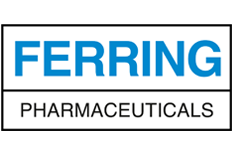Believing in the power of research
At Ferring we believe in the power of research and the need to go where the research takes us. We are passionate and curious about science.
Ferring invests heavily in the process of creating new medicines through its research and development centres and through research collaboration with scientific institutes, as well as biotechnology and pharmaceutical companies throughout the world.
Ferring’s R&D activities are focused on the development of first-in-class therapeutic peptides and proteins in our key therapeutic areas: reproductive health, urology, gastroenterology and endocrinology.
We strive to maintain our leadership by:
- Focusing on novel peptide-based drugs and biotechnology-derived medicines, such as recombinant proteins and other biologics
- Investing in cutting-edge science and technology
- Adapting existing peptide-based medications to meet specific medical needs
- Developing effective and patient-friendly drug delivery systems.
Ferring has R&D centres in 11 countries (China, Denmark, India, Israel, Japan, Scotland, two in Switzerland and three in the US).
The main pharmaceutical development hub is in Denmark. Copenhagen and Parsippany sites drive and execute product innovation and development of new molecular entities as well as further development of our existing in-line products to better meet patient needs or address new diseases areas.
Our expertise area
Peptide technology
Peptide-based drugs are at the heart of Ferring’s R&D activities and the history of the company. In the human body, peptides along with hormones and proteins control various biological processes such as autocrine, paracrine and endocrine functions. Peptides are valuable tools in drug design and discovery because they provide a link between a gene and its function.
At the heart of Ferring’s work with peptide technology are amino acids, the building blocks of life, developed and optimised by nature over billions of years to build proteins, receptors and peptide hormones.
Ferring’s peptide technology and know-how combines naturally-occurring, DNA-coded, amino acids with large collections of proprietary synthetic amino acids to “improve on nature” by overcoming the typical limitations of endogenous peptides and hormones, primarily pleiotropic and short-lived actions.
The resulting “drug-like” molecules retain the key advantages of naturally-occurring peptides and hormones (high potency, high efficacy and high safety), while offering improved pharmacodynamics (receptor and function selectivity), pharmacokinetics (enzymatic stability, clearance, half-life and duration of action) and pharmaceutical properties (solubility and stability).
Recombinant protein and biologics
As well as peptides, Ferring is also specialised in researching and developing biotechnology-derived medicines, such as recombinant proteins and other biologics.
Drug delivery
Drug delivery is the means by which the treatment is administered to the patient. Drug delivery principles are traditionally described as parenteral and oral.
The preferred delivery principle for patients is the oral route. However, the nature of the drug often makes it impossible so that a parenteral formulation principle has to be chosen. Parenteral delivery systems can be classified in different ways, but are typically divided into sterile (e.g. injectables) and non-sterile products (e.g. rectal, vaginal, transdermal or nasal formulations).
Ferring’s fundamental principle is to develop drug delivery systems offering the most patient-friendly dosage form possible with regards to ease of administration and convenience.
Ferring India R&D is working on oral fast dissolving technologies to cater the unmet need of patients by providing convenience to take the dosage form. Other development activities involve drug delivery to bladder along with oral and parenteral dosage forms.
Ferring innovations
- For patients undergoing long-term treatment, Ferring has developed technologies to exert a controlled release, such as micro-encapsulation or a self-forming depot.
- Small volume parenteral development will often include development of a suitable injection device.
Ferring has expanded further into not only needle-free devices, but also specific trans-dermal delivery technologies to increase convenience and user friendliness for the patient.
Discover Ferring areas of research

